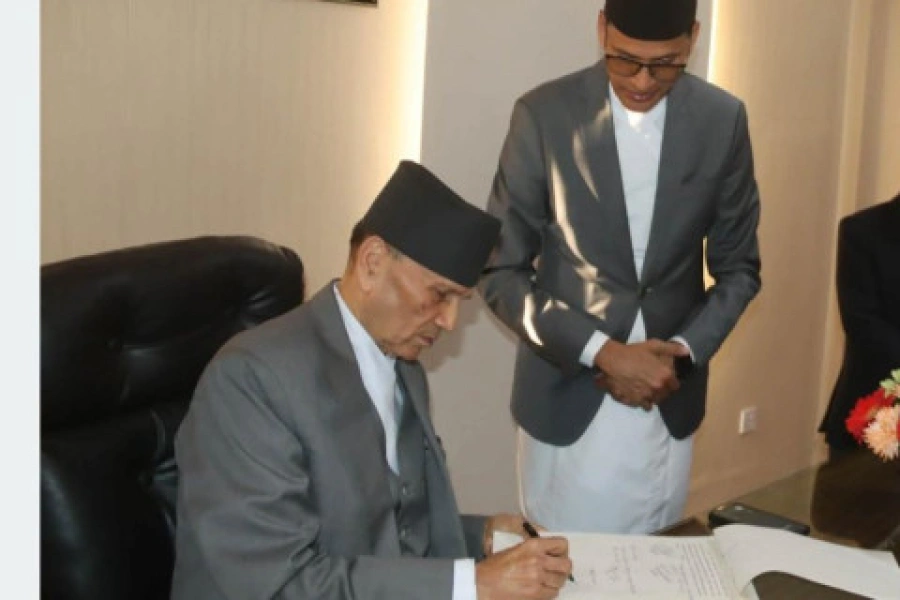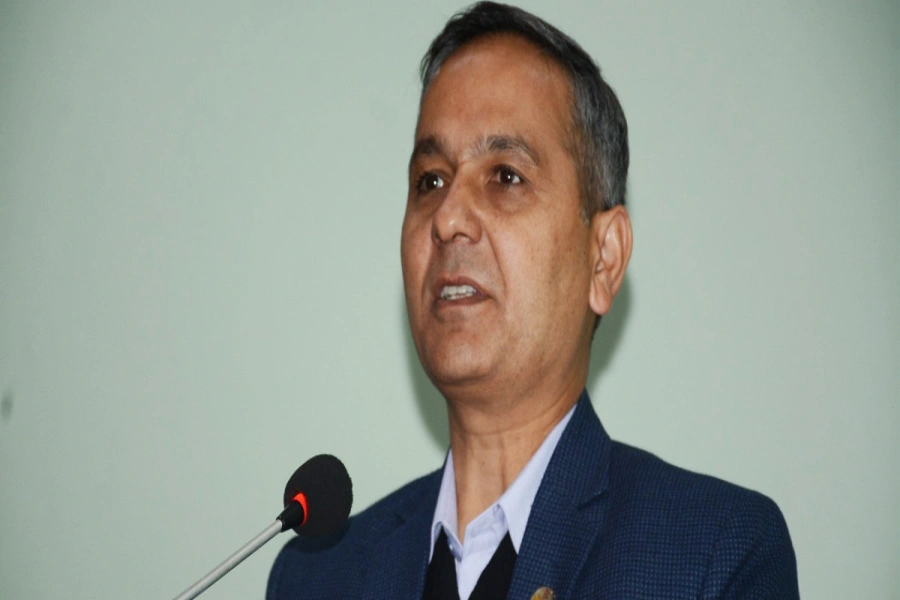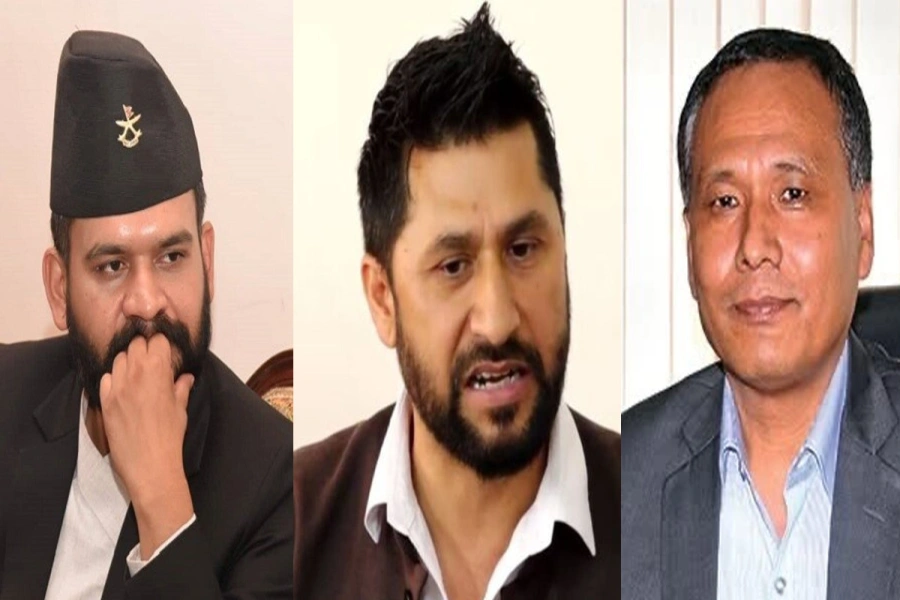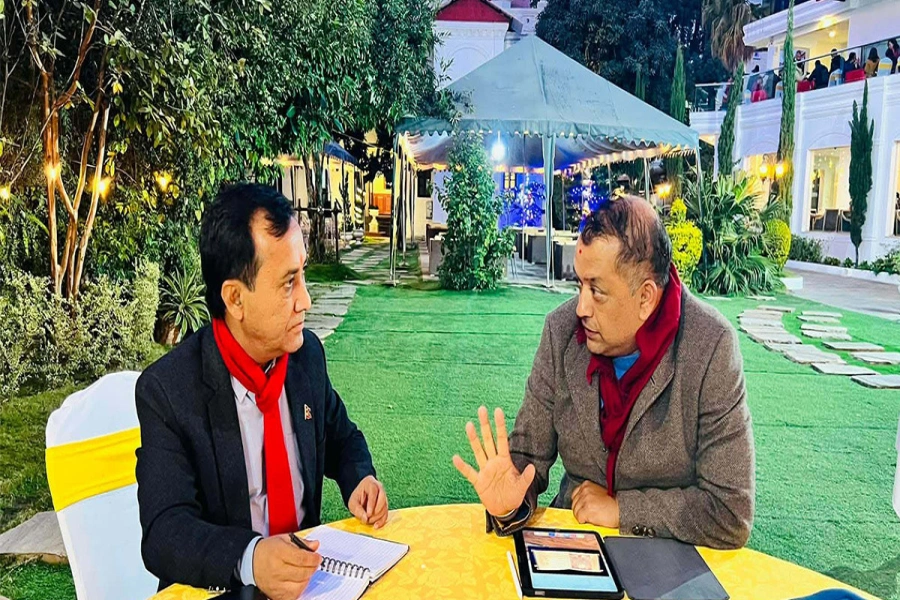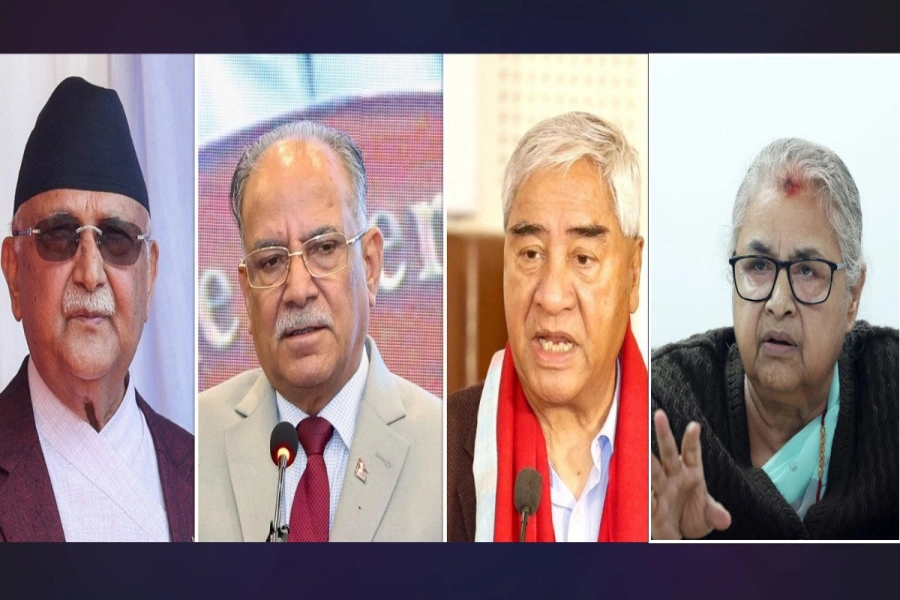The state capture of the nascent Federal Democratic Republic of Nepal began in March 2013 when duly elected representatives of the people were persuaded to hand over the reins of power to an extra-constitutional outfit in the name of political consensus.
The Council of Ministers under Chief Justice Khil Raj Regmi did exactly what it was meant to do. Outcome of the polls politically formalized the reestablishment of complete control of the PEON over the destiny of the nation.
These days, the Naya Shakti Frisbee of former Prime Minister Baburam Bhattarai is flying high in the social sky. But history will probably judge Bhattarai less highly than what he seems to think of himself. Even in his post-guerilla life, he failed the country at least twice at crucial moments: First by capitulating to the political oligarchy and surrendering the government to an unelected bunch without a whimper and then conspiring with the Kathmandu cabal in formulating the 16-point deal that ended the dream of transforming Nepal into an inclusive and federal republic.
Of his two failures, Bhattarai has been less forthcoming about compulsions that made him agree to the controversial compact. Unlike in early-2013 when the whole world appeared to be united in ousting the Maoists from constitution-making process, priorities for the country prior to the 16-point deal were humanitarian rather than political. Coping with earthquake needed undivided attention of society, polity and the international community. No signatory of the settlement has been able to explain the situation of the time in a satisfactory manner. Rumors, however, continue to fly thick and fast.
Cold calculations probably motivated Pushpa Kamal Dahal into accepting the deal served as an offer he couldn’t refuse: Sign on the dotted lines and get a share of the loot to come or be prepared to face the consequences of being a war criminal. Sushil Koirala needed little convincing. He was so desperate to take the credit for promulgating a constitution—any kind of constitution—before his imminent demise that he was ready to sign even on a blank sheet of paper. He ended up doing worse.
A clause of the constitution, the term of SuKo’s office and with it the fate of Nepali Congress party was sealed. The condition of his ouster implied that the government would go back to those who had always run it as their fiefdom—the PEON in the garbs of Stalinists, monarchists and Maoists that late Girija Prasad Koirala had correctly identified as being one and the same.
Clarifications on MCC Nepal Compact

Pygmalion plot
A year ago in mid-May, when aftershocks of the Gorkha Earthquake were still rattling the mid-mountains, remnants of the ancien régime —largely composed of retired army brass, wizened mandarins, the Panchayat nomenklatura, the 4Bs (banker, builder, broker and business tycoons) plutocrats, former diplomats and some scheming solicitors—reportedly decided to “seize the opportunity” brought about by the quakes. Promulgation of a constitution that had been a dream of at least three generation of Nepalis was to be turned into a “fast track” farce.
It’s not clear who had the audacity of taking such a premeditated initiative in the middle of one of the worst disasters in history. All conspiratorial fingers, however, were being pointed towards the battle-hardened warriors of the backroom maneuvering of the 1960s.
The name of Tulsi Giri—deputy to three Shah kings and once christened the Mother of Panchayat—was said to have been used to convince conservative elements of all parties that if a constitution was not adopted forthwith, the country was headed for doom.
SuKo has once been Giri’s bag-carrier and was aware of his international as well as internal links. He readily bought the argument. Ever a pragmatic, Sher Bahadur Deuba was so convinced that he began to talk as if the plan was all his own.
The other diehard loyalist of the old Gorkhali order and yet another confidante of three successive Shah Kings Kirtinidhi Bista’s authority was cited to circulate a story that if a constitution wasn’t promulgated now, the country will get no second chance.
Self-proclaimed nationalists in all communist parties of Nepal have always been a great admirer of Sinophilic Bista. Anything said in his name carried the authenticity of divine sanction for Nepali acolytes of Marx and Mao. From Khadga Prasad Sharma Oli to Chitra Bahadur KC and Narayan Man Bijukchhe readily fell in line.
It was perhaps easier to get the tired Maoists and rogue Madheshis on board. A gossip was spread through whispers that the future of neither the republic nor the secularism was safe in the absence of a constitution and the army was ready for a take-over to stop endless uncertainties. The power of rumor lies in the impossibility of its verification. With little access to the corridors of command in Kathmandu, almost everyone believed in the plot as the least bad option.
It’s still not clear whether the two elderly gentlemen with impeccable reputations of having been diehard conservative and consistent ultranationalists throughout their political lives were themselves at the wheels or their acolytes were steering the course in their name without their knowledge, but the direction, speed and the efficiency of the June 2015 conspiracy had the stamp of 1960 coup all over it. The essence of the agreement was to turn the clock back and establish a monochromatic republic with an oligarchy of the ancien régime running New Nepal the old way.
Informal control of the republic had been formalized with the March accord in 2013, which was then legalized by the second Constituent Assembly. The aim of June 2015 compact was to legitimize the old-new-old order with a contrived constitution for long-term sustainability of the PEON’s complete domination.
Befuddled bystanders
It is conventional wisdom in Kathmandu that Americans look through Indian lenses at Nepal. That may have been true in the noughties when the US administration was too preoccupied with Af-Pak mess in South Asia to worry too much about New Delhi’s other backyards. With China as the centerpiece of Pivot Asia, Indians seem to have reconciled themselves to playing second fiddle wherever the global hegemon is ready to bear the burden of lead.
Corroboration is impossible, but there are reasons to believe that at least an informal consent of the US Ambassador Peter W. Bodde was obtained for the outline of the 16-Point settlement. Americans enthusiastically welcomed the deal as soon as it was sealed.
Suspicious of what it calls ‘pseudo-secularists’ dominating diplomatic missions and security agencies, the Bhartiya Janata Party government in New Delhi has more faith in its linkages with Hindutva elements in Nepal than in its own official channels. That could have been the reason the Indian Prime Minister sent his special envoy, Foreign Secretary S. Jaishankar, only after the 16-point deal had reached its fruition. By the time South Block realized that it has been taken for a royal Gorkhali ride by its informants in Kathmandu, it was too late. The Oli-garchy thumbed its nose as the uninvited guest to the PEON party left in a huff.
The Chinese played their cards extremely well as usual. They had already increased annual Chinese grant five-fold in March 2015 to wean the rightwing establishment away from the spell of Modi magic. Any compact that countermanded the centrality of external actor established by the 12-point understanding was welcome to Beijing. They quietly gave the 16-point deal their seal of approval. Attitude of the rest of the world was reflected in the UN’s pompous pronouncement, which called it “… a major milestone in Nepal’s political history” even as the deal was being challenged politically and legally inside the country.
Nepal has one of highest media density anywhere in the world. In order to survive, they have to be muck-licker rather than muckraker. In addition, composition of Nepali media is overwhelmingly mono-ethnic. The Oli-garchy didn’t have to try too hard. Post-deal, the media turned into a willing accomplice rather than a considerate critic of the compact that has ended up creating what some had mockingly called a “16-point party” composed of democrats, Stalinists, Maoists and opportunists!
The problem with the contested constitution lies in its premise rather than the content—it was prepared with the intention of legitimizing social inequalities bordering on racism. Those seeking constitutional amendments are chasing chimera. That is unlikely to happen with the Oli-garchy in full control of the country.






